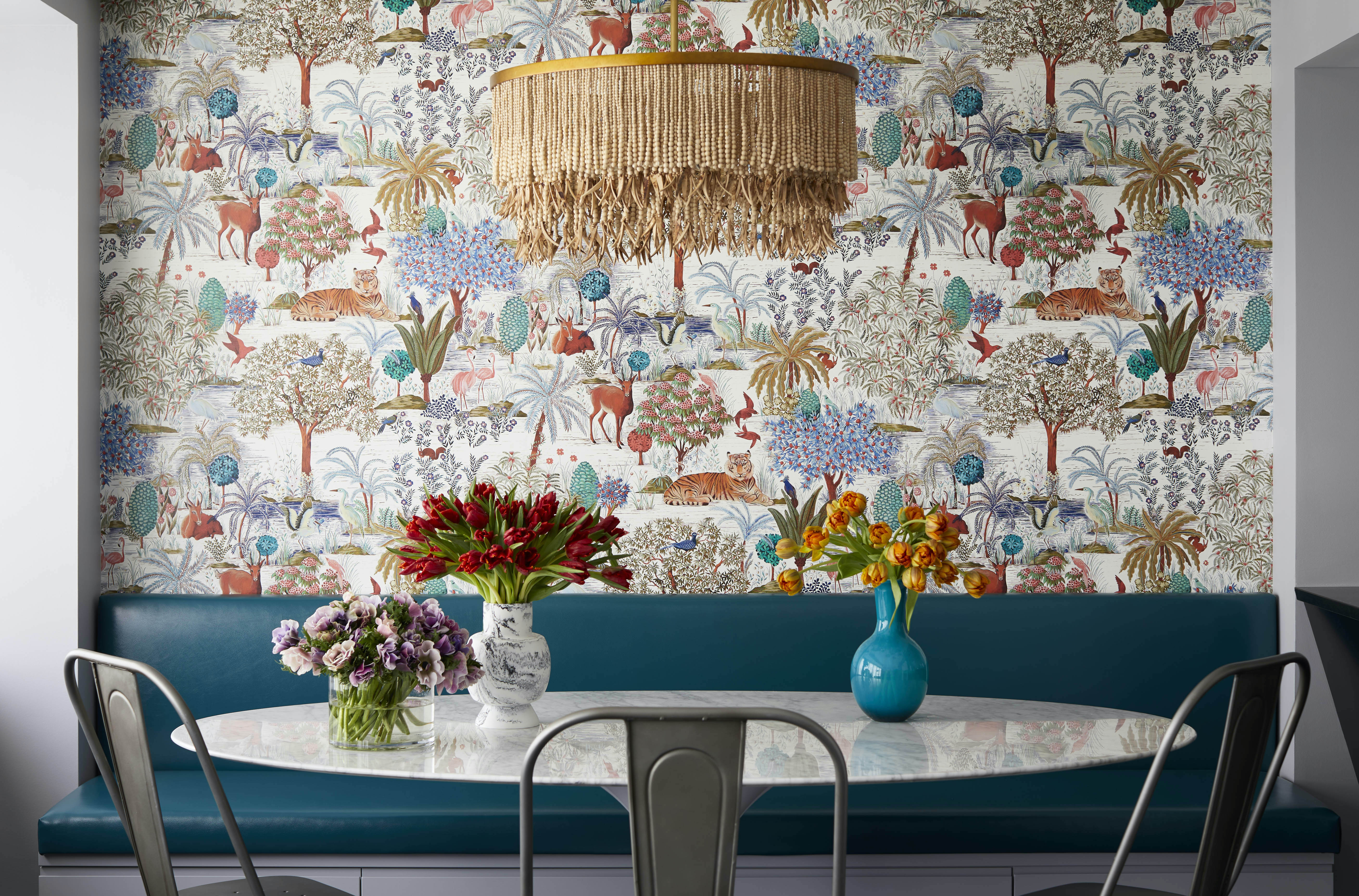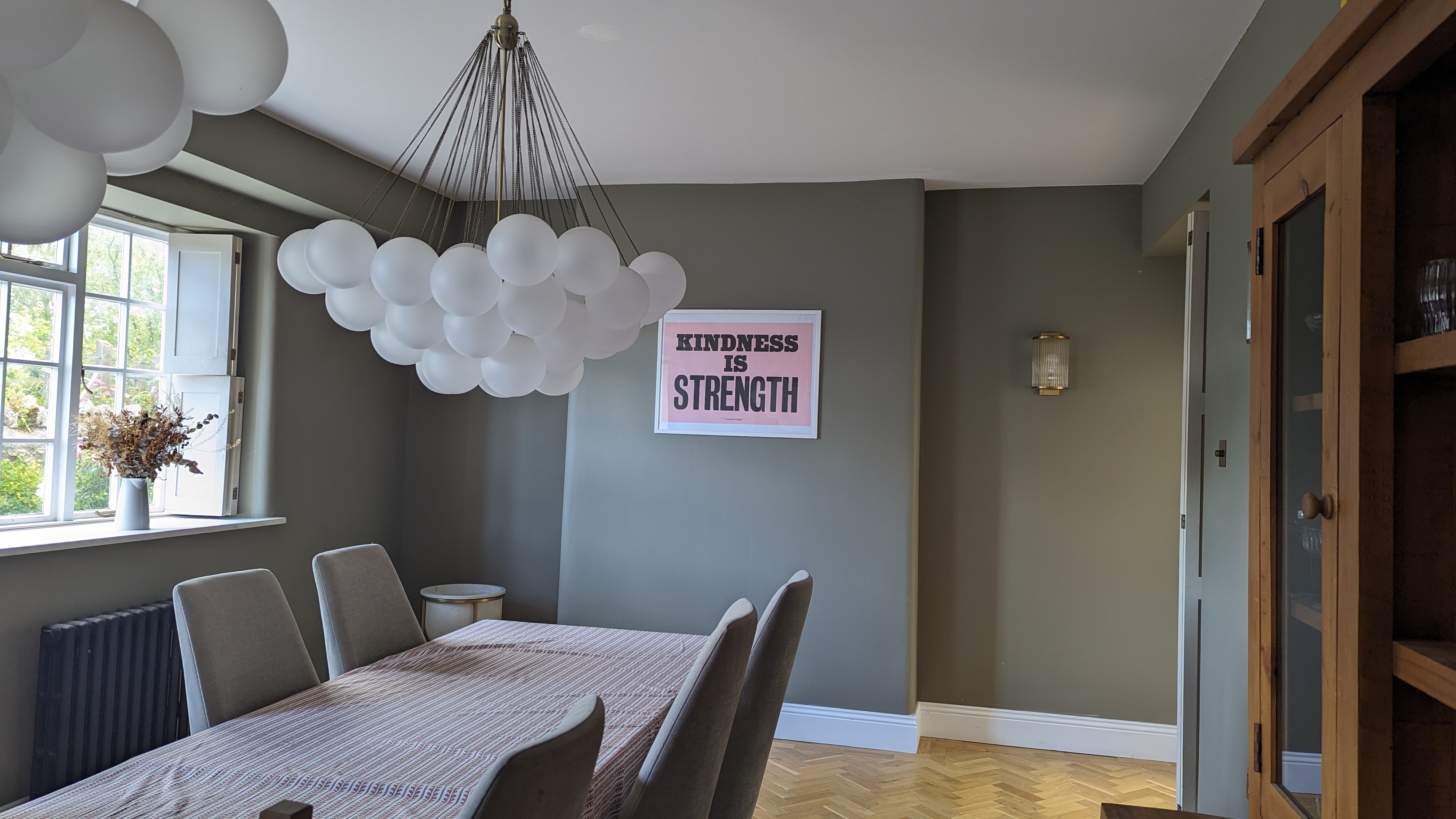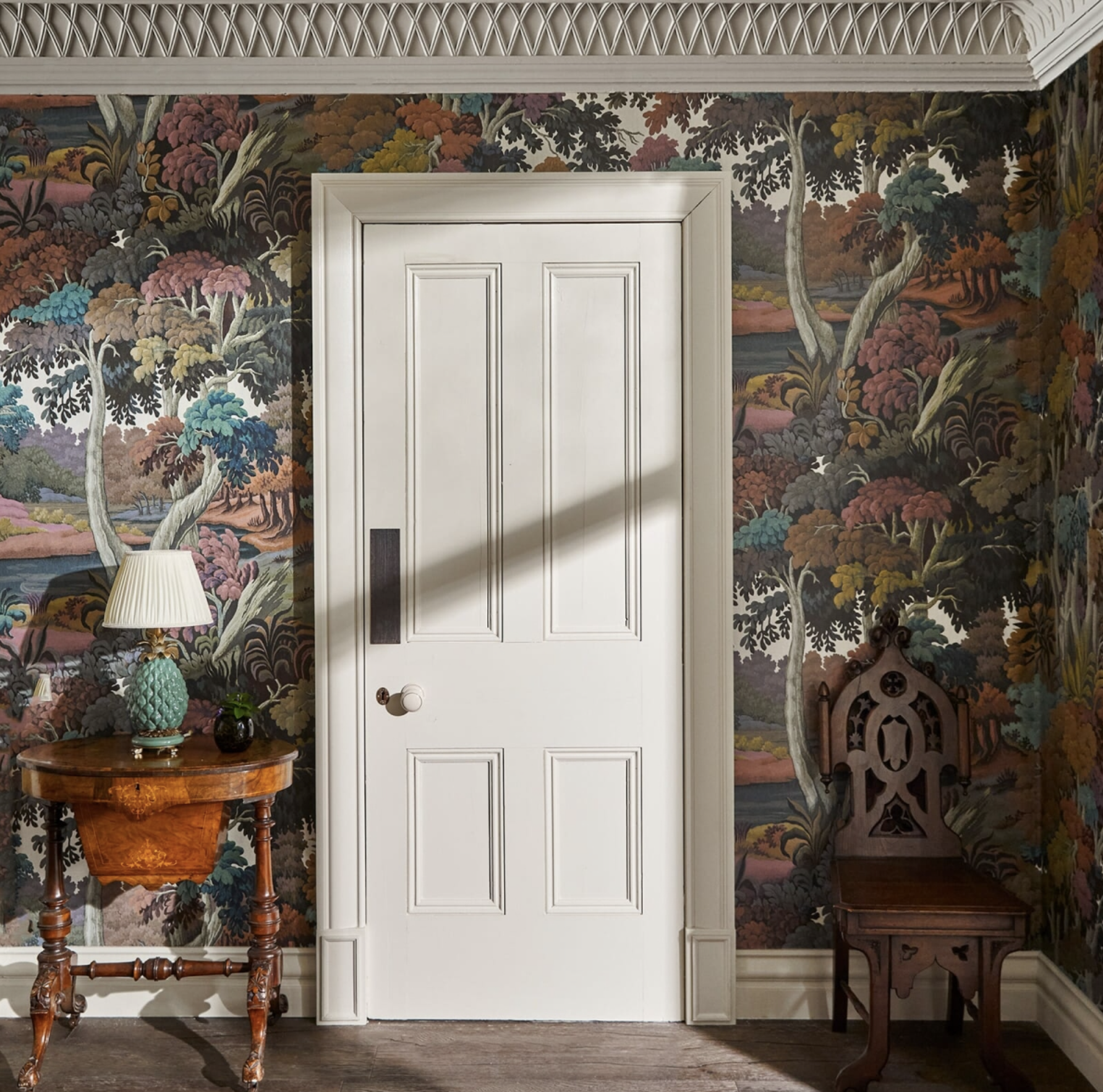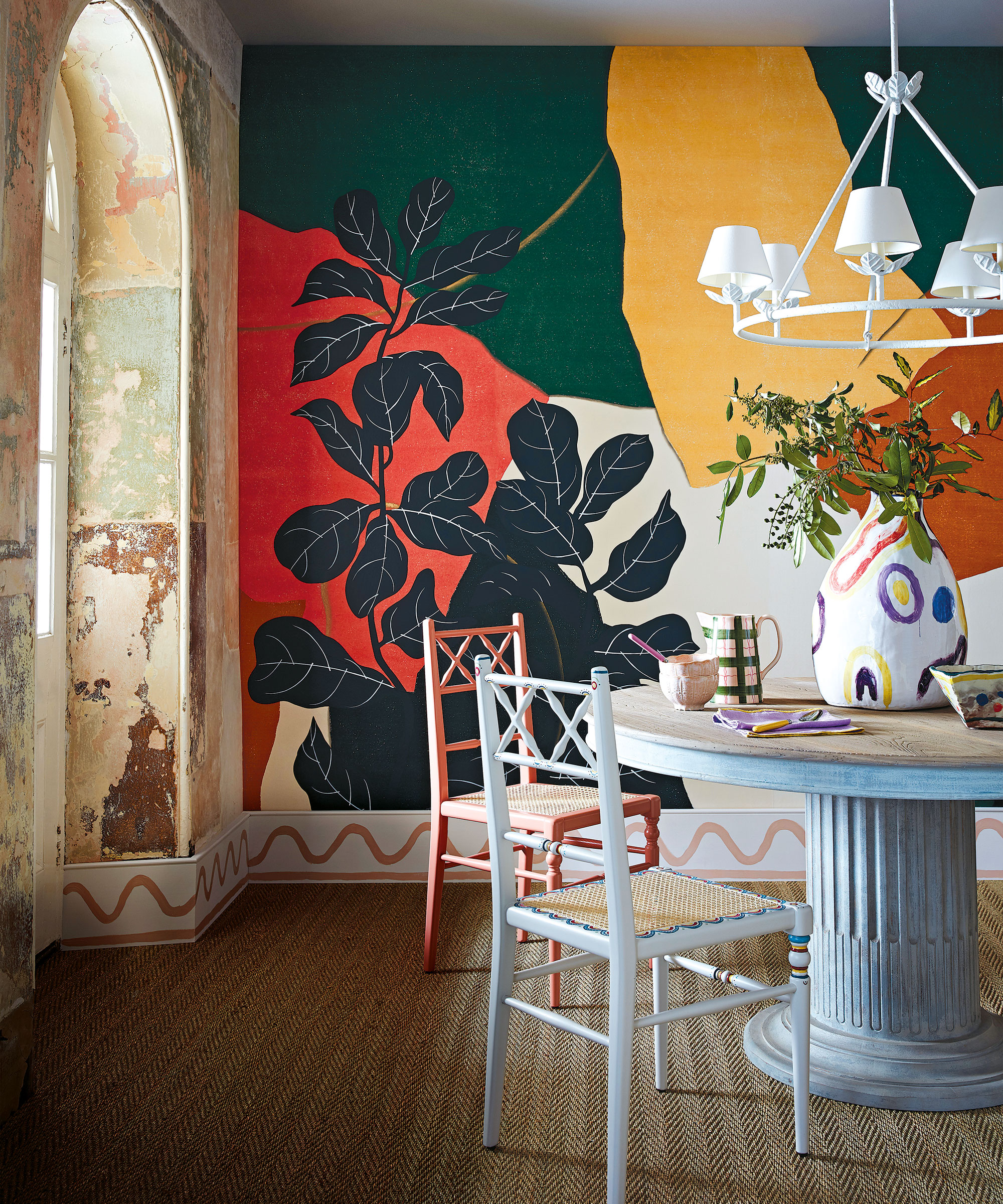
By the time we reached our dining room in the great house refurb that cost us all our money and most of our patience, we had lost a lot of steam. We'd spent more than we intended (as is usually the way) on issues we didn't know the house had, like its 150-year-old floor joists. So the idea of having people over, of cooking meals and hosting dinner parties, was not a scenario I could visualize, and the dining room got de-prioritized.
'Let's just paint the walls,' I said to my husband, who was as equally at the end of his tether as I was. 'It'll be cheaper and easier than a mural, and if we go for a rich, dark color it will still feel like a sophisticated space.'
And I was right, it did. Covered in Portcullis, a rich, dark green emulsion by Mylands Paints, it was a bold shade that, by night, took on a warm glow when illuminated by candlelight and sconces turned low.
But every time I go in there I really regret not going for a wall mural, a key decorative dining trend that designers love and regularly favor. And honestly, it's the thing I lament most about the entire renovation.

Ok, so I really love the dining room color I chose. Like all Mylands Paints, its pigments has multiple nuances, changing hue depending on the time of day and the level of the lighting.
The cloud pendants work, hanging dream-like above the table, creating soft orbs of light and a wow moment as soon as you walk in. I'm really happy with the parquet we chose (to go over those replaced floor joists).
But because the room has no architectural details of its own, no wainscoting or paneling to elevate the walls, I wish we'd done what I had originally intended and gone for a mural wallpaper. It would have added character, drawn people together, and made a space that feels like its own little world. A bubble that invites intimacy and a collective sense of coming together for conversation and good times. As it is, I feel like this room is lacking that, and, as a result, when people come over we invariably eat at the kitchen island.
Design expertise in your inbox – from inspiring decorating ideas and beautiful celebrity homes to practical gardening advice and shopping round-ups.

It's a big interior design trend to use a mural in a dining room. Typically, dining rooms get used less than spaces like kitchens and living rooms, so you can be bolder in them because people are in them for less time – it's the same theory that often get applied to powder rooms.
But murals also have a social fuction, too, not just a decorative one. 'Murals are the perfect wallcovering to create a physical and emotional focal point, which is ideal when setting the scene for a fabulous luncheon or dinner party,' says Rayman Boozer, the New York-based interior designer and founder of the studio Apartment 48. He decorated the dining area above, a nook that has been enlivened by a graphic forest scene. 'Mural artwork tells a story and sparks conversation, often by featuring very specific human or natural imagery that everyone can relate with and discuss.'
The mural I'd had on my wishlist – and still have on my wishlist if I ever get around to redecorating, is the Plantasia wallpaper by House of Hackney. I'd spotted it in the brand's showroom at 200 Lexington in New York, sent pictures to my husband, and surprised myself by getting him on board (we almost never agree on decorative flourishes). It's a fantastical little world full of surprises, the Prism colorway an unexpected jewel-box take not normally applied to forest scenes.

Plantasia in Prism by House of Hackney
I asked Frieda Gormley, House of Hackney's co-founder, why she thought this approach could be such a successful decorative approach for a dining room.
'I feel that murals work really well to bring art into a room,' Frieda said. 'If you’re sitting at a dining table and have a forest scene around you [on the walls] then you almost feel like you're sitting in the woods – the evening takes on a magically enchanting sense.'
Frieda has the brand's Arborea mural in her own dining room, and says she enjoys that unexpected delight it brings to dinner parties, instantly putting people into a more convivial mood.

The designer Enass Mahmoud suggests 'picking patterns that have a softness to them, as these work particularly well in small spaces,' and can be used to zone a dining area within an open-plan space. She says her 'current favorite' is Zoffany’s Hawksmoor in Copper which is a whirl of organic shapes and 'feels very sumptuous.'
The idea of softness can be interpreted in many ways, but what you're trying to create within a dining room is a space where your guests – and you – feel instantly relaxed. So choose colors that aren't too bright or have a neutral base to the pattern, motifs like leaves, trees, or abstract curves that are soothing on the eye, and nothing too jarring or strong - no geometric shapes or zags.
It's an approach I keep thinking about employing for my own dining room, a space I don't feel like I can justify spending money on because it's one I hardly use. But, then, if I had a mural in it, would I use it more? The eternal question going round and round in my mind, and the biggest regret of my renovation.
Pip Rich is an interiors journalist and editor with 20 years' experience, having written for all of the UK's biggest titles. Most recently, he was the Global Editor in Chief of our sister brand, Livingetc, where he now continues in a consulting role as Executive Editor. Before that, he was acting editor of Homes & Gardens, and has held staff positions at Sunday Times Style, ELLE Decoration, Red and Grazia. He has written three books – his most recent, A New Leaf, looked at the homes of architects who had decorated with house plants. Over his career, he has interviewed pretty much every interior designer working today, soaking up their knowledge and wisdom so as to become an expert himself.

